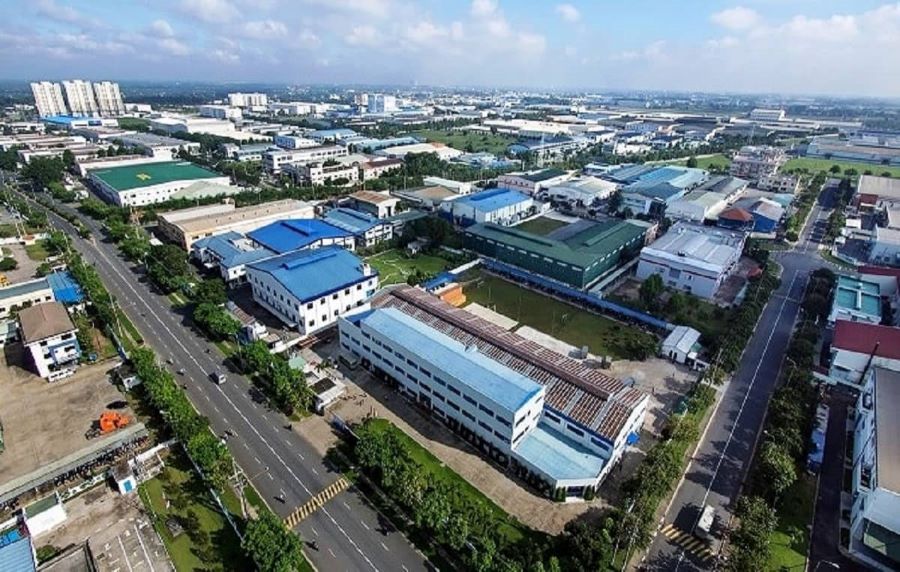Water pollution in Dong Nai is becoming increasingly severe as industrial zones, urban areas, and manufacturing activities continue to expand. Polluted water sources pose significant risks to public health and quality of life. Therefore, the need for an efficient, safe, and compliant wastewater treatment system has become essential for both businesses and regulatory authorities. If you are looking for an optimized and suitable wastewater treatment solution in Dong Nai, this article will provide detailed and useful information.
1. Why is wastewater treatment necessary in Dong Nai?
The rapid industrial and urban development in this region has resulted in a growing volume and diversity of wastewater. Wastewater treatment in Dong Nai is a mandatory requirement to prevent water pollution, protect natural ecosystems, and reduce negative impacts on community health. It is also an important factor that helps maintain a safe, clean, and sustainable living environment for the province.
In addition, complying with environmental regulations helps businesses avoid legal risks, costly penalties, and reputational damage. A properly designed wastewater treatment system not only saves water resources but also supports enterprises in achieving green, sustainable, and environmentally friendly development goals.

Why does Dong Nai need to prioritize wastewater treatment solutions?
2. Which businesses must treat wastewater?
Businesses operating in sectors that generate wastewater from production, processing, or service activities must comply with Dong Nai’s wastewater treatment regulations to avoid environmental pollution and meet legal standards. This is essential for sustainable operations and preventing risks such as penalties, suspension, or negative impact on brand reputation.
The groups of businesses required to treat wastewater include:
- Industrial zones and industrial clusters
- Manufacturing and processing plants (food, seafood, textile, paper, wood, chemicals…)
- Livestock farms
- Hospitals, clinics, and medical facilities
- Restaurants, hotels, tourist areas, resorts
- Residential areas, apartment complexes, new urban developments
- Workshops for vehicle washing, repairing, and mechanical processing
3. Wastewater Treatment Methods
Wastewater treatment methods are applied depending on the characteristics of each source, scale, and required quality after treatment. Choosing the right technique ensures high removal efficiency while optimizing operating costs. This is also essential for legal compliance and protecting the ecosystem.
Below is a rewritten version based on your provided content—completely original but retaining correct meaning, correct groups, and appropriate treatment technologies:
- Domestic wastewater: Typically applies technologies like AAO, AO, or upgraded AAO combined with MBR to effectively remove organic matter and harmful microorganisms. These systems are suitable for residential areas, buildings, and urban zones.
- Industrial/production wastewater: Industrial facilities often use enhanced AAO or MBBR to treat wastewater containing oil, chemicals, and heavy metals. These systems stabilize effluent quality and help businesses meet regulatory standards.
- Medical wastewater: AAO or AAO–MBR systems are preferred to thoroughly remove bacteria, pathogens, and persistent chemicals. This is ideal for hospitals and clinics.
- Wood–processing wastewater: Often treated using AAO combined with MBR to remove high organic loads and color. The system ensures the effluent meets environmental regulations.
- Textile and dyeing wastewater: Technologies such as SBR, MBR, or MBBR help remove color, chemicals, and high–concentration COD. These solutions provide stable and reliable performance for textile–dyeing operations.
- Livestock wastewater: Typically uses UASB for anaerobic degradation, followed by AAO to significantly reduce odor and organic load. This model suits medium to large livestock farms.
4. Dai Nam – A Reputable and High–Quality Wastewater Treatment Company in Dong Nai
Dai Nam – a trusted wastewater treatment company in Dong Nai – is chosen by many businesses thanks to its ability to serve various industries and system scales. With a team of experienced engineers and modern technology, Dai Nam delivers optimized, sustainable, and fully compliant wastewater treatment solutions. Below are the key advantages that make Dai Nam a reliable partner in the market:

Dai Nam provides high–quality wastewater treatment solutions in Dong Nai.
Extensive expertise:
Dai Nam has implemented numerous projects across different industries, from domestic to industrial wastewater. This experience enables a comprehensive understanding of wastewater characteristics and ensures effective treatment outcomes.
- Modern treatment technologies: The company uses advanced technologies such as AAO, MBR, SBR, and MBBR depending on project requirements. These systems deliver stable operation, cost efficiency, and regulatory compliance.
- Optimized consulting and design: Dai Nam conducts thorough on–site assessments before proposing treatment solutions. Each design is optimized to meet the client’s capacity, available space, and budget, ensuring long–term operation without excessive costs.
- Dedicated support & warranty: The company provides scheduled maintenance and rapid technical assistance when issues arise. A clear after–sales service process ensures stable system performance and minimizes operational risks.
List of wastewater treatment projects implemented by Dai Nam:
- The Global City Thu Duc Wastewater Treatment System – 9,090 m³/day
- The Sun Tower Ba Son Wastewater Treatment System – 3,200 m³/day
- TH True Milk Dairy Processing Wastewater Treatment System – 3,000 m³/day
- The 9 Stellar Wastewater Treatment System – 1,380 m³/day
- Livestock Wastewater Treatment – 1,600 m³/day (Hau Giang Agricultural Breeding Center)
- Vinasoy Soy Milk Processing Wastewater Treatment System – 1,000 m³/day
- Celesta Rise Luxury Apartment Wastewater Treatment System – 950 m³/day
- Golden Frog (Switzerland) Flavor Production Wastewater Treatment System
- Phu An Thạnh Industrial Park Wastewater Treatment System, Long An – 360 m³/day
- North Bac Ninh Waste–to–Energy Plant Leachate Treatment System – 480 m³/day
- An Phuoc General Hospital Wastewater Treatment System – 400 m³/day (Phan Thiet)

